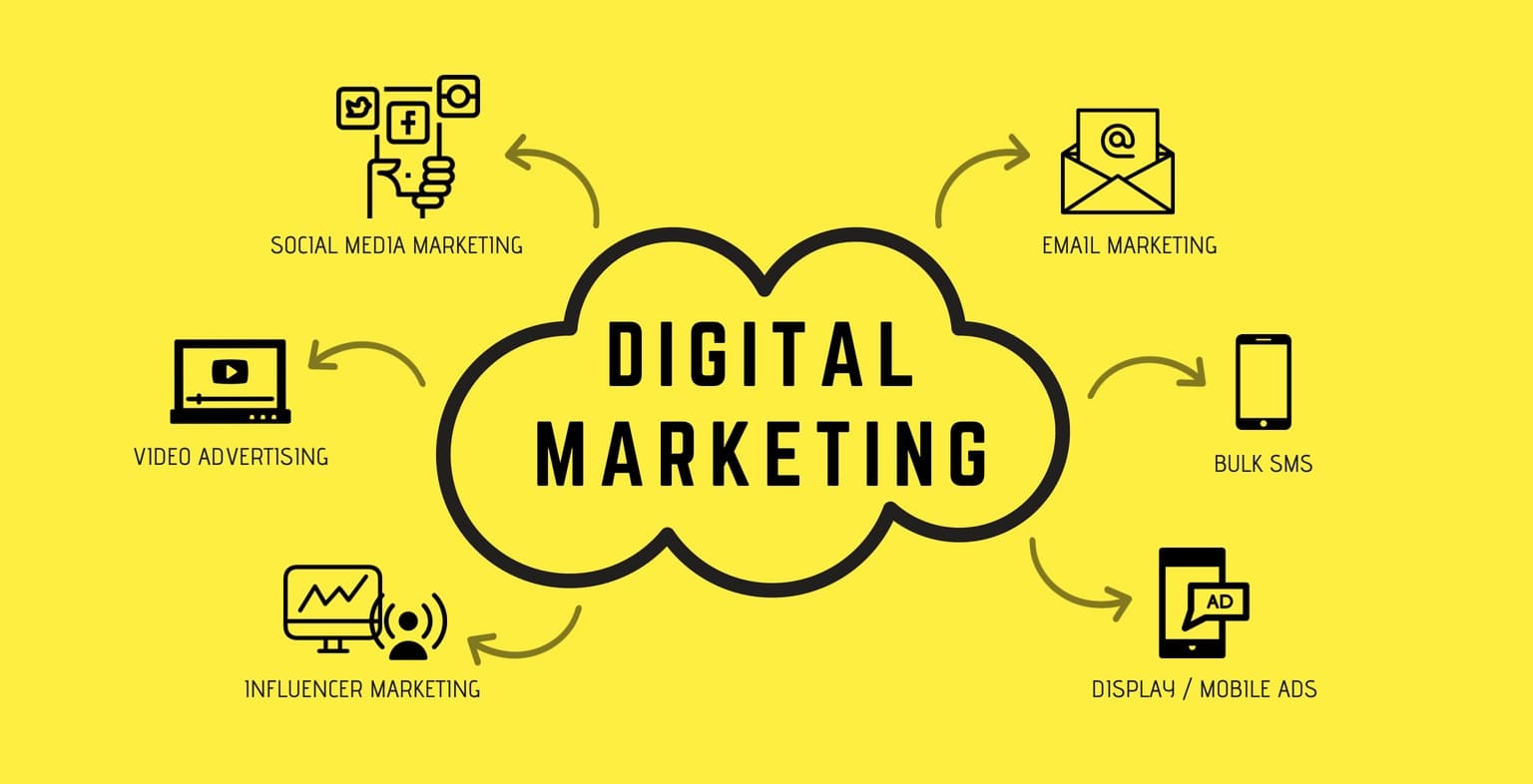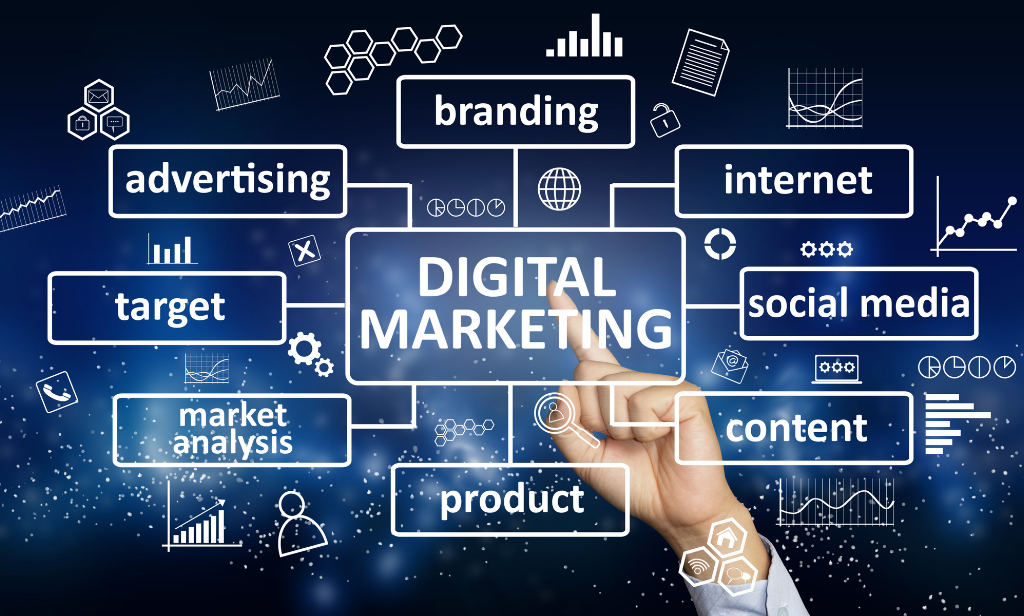Digital marketing refers to the promotion of products, services, or brands through digital channels such as search engines, social media, email, and websites. The goal of digital marketing is to reach and engage customers through targeted and personalized campaigns, and ultimately drive conversions and sales.
Some common digital marketing strategies include:
- Search Engine Optimization (SEO): Optimizing a website and its content to improve its ranking in search engine results pages (SERPs)
- Pay-per-click (PPC) advertising: Placing ads on search engines or social media platforms and only paying when the ad is clicked on
- Social media marketing: Promoting a business or product on social media platforms such as Facebook, Instagram, and Twitter
- Content marketing: Creating and distributing valuable content to attract and engage customers
- Email marketing: Sending promotional emails to a list of subscribers
- Affiliate marketing: Partnering with other businesses to promote products or services
Digital marketing also includes tools and technologies such as analytics, marketing automation, and artificial intelligence (AI) which are used to measure the effectiveness of campaigns, personalize marketing efforts, and automate certain tasks.
With the rise of digital technology, digital marketing has become a crucial component of any business’ overall marketing strategy, as more and more customers are turning to the internet to research and make purchasing decisions.

- Artificial Intelligence and Machine Learning in Digital Marketing: The use of AI and ML in digital marketing is becoming more prevalent, with tools like chatbots and predictive analytics being used to enhance customer engagement and personalization.
- Influencer Marketing: This strategy involves partnering with social media influencers to reach a wider audience and increase brand awareness.
- Video Marketing: Video content is becoming increasingly popular, and many businesses are using platforms like YouTube and TikTok to promote their products and services.
- Interactive Content: Interactive content such as polls, quizzes, and surveys can be used to engage and retain customers, while also gathering valuable data.
- Voice Search Optimization: With the increasing popularity of voice assistants like Alexa and Google Home, businesses need to optimize their content for voice search in order to be easily found.
- Social Media Advertising: Social media platforms like Facebook, Instagram, and LinkedIn offer businesses a variety of advertising options to target specific audiences and achieve specific goals.
- Email Marketing: Email marketing remains an effective way to connect with customers and promote products, with personalized and automated emails proving to be particularly successful.

- Mobile Optimization: With the majority of internet usage now taking place on mobile devices, businesses need to ensure their websites and digital content are mobile-friendly.
- Personalization: Personalizing marketing efforts for individual customers can lead to increased engagement, sales, and customer loyalty.
- Live Streaming: Live streaming on platforms such as Instagram Live and Facebook Live can be used to connect with customers in real-time and build a sense of community.
- Interactive Experience: Businesses are using interactive experiences such as Virtual Reality (VR) and Augmented Reality (AR) to help customers visualize their products and services and enhance their overall experience.
- Micro-Moments: Micro-moments refer to the small, everyday decisions that customers make, such as searching for information or making a purchase. By understanding and catering to these micro-moments, businesses can better serve their customers.
- Micro-Influencers: Micro-influencers are social media users who have a smaller following than traditional influencers, but still have a significant impact on their niche audience
- Podcast Advertising: Podcasts are becoming an increasingly popular medium for both entertainment and information. Podcast advertising allows businesses to target specific audiences and increase brand awareness.
- Native Advertising: Native advertising is a form of digital advertising that blends in with the content of the website or platform it is being displayed on. This can make it more effective in engaging customers and driving conversions
These are just a few of the latest digital marketing topics, and new trends and technologies are emerging all the time. Businesses should stay informed and adapt their strategies accordingly in order to stay competitive.


